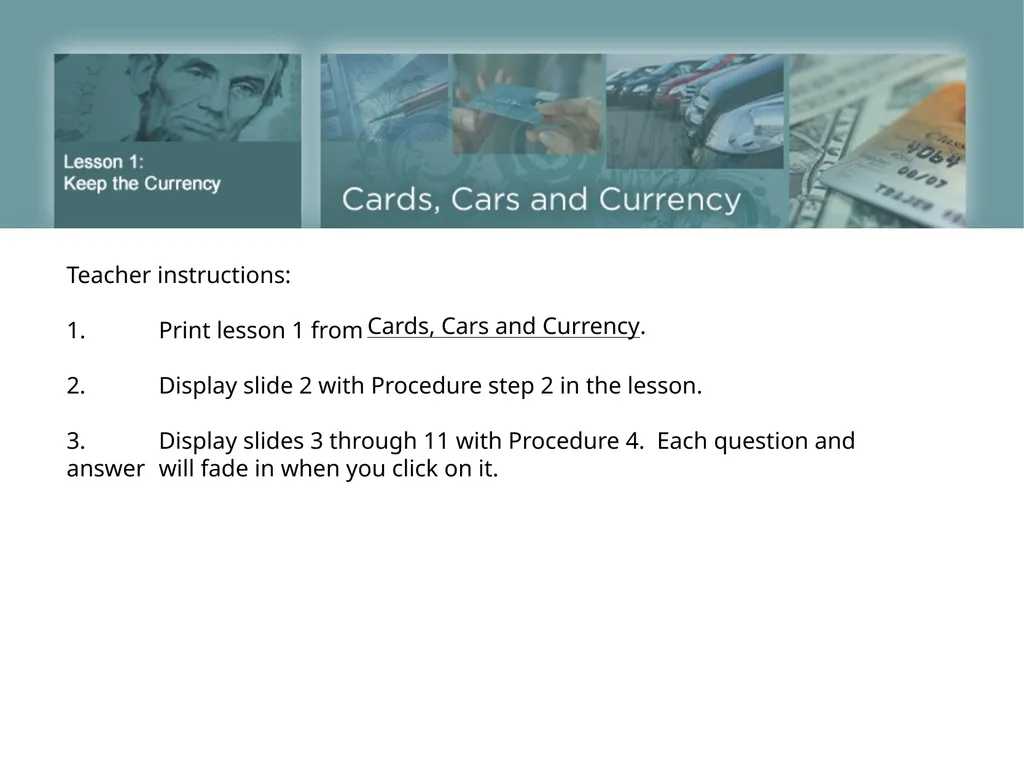
Author : cheryl-pisano | Published Date : 2025-05-17
Description: Teacher instructions: 1. Print lesson 1 from 2. Display slide 2 with Procedure step 2 in the lesson. 3. Display slides 3 through 11 with Procedure 4. Each question and answer will fade in when you click on it. Cards, Cars and Currency. WhatDownload Presentation The PPT/PDF document "" is the property of its rightful owner. Permission is granted to download and print the materials on this website for personal, non-commercial use only, and to display it on your personal computer provided you do not modify the materials and that you retain all copyright notices contained in the materials. By downloading content from our website, you accept the terms of this agreement.
Here is the link to download the presentation.
"Teacher instructions: 1. Print lesson 1 from 2."The content belongs to its owner. You may download and print it for personal use, without modification, and keep all copyright notices. By downloading, you agree to these terms.













